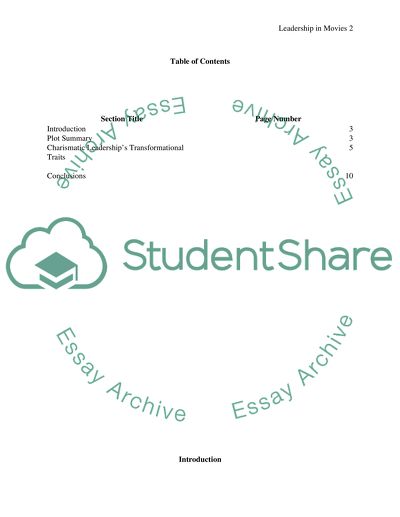Cite this document
(Charismatic Leadership's Transformational Traits Movie Review Example | Topics and Well Written Essays - 2000 words, n.d.)
Charismatic Leadership's Transformational Traits Movie Review Example | Topics and Well Written Essays - 2000 words. https://studentshare.org/human-resources/1428284-leadership-in-the-movies
Charismatic Leadership's Transformational Traits Movie Review Example | Topics and Well Written Essays - 2000 words. https://studentshare.org/human-resources/1428284-leadership-in-the-movies
(Charismatic Leadership'S Transformational Traits Movie Review Example | Topics and Well Written Essays - 2000 Words)
Charismatic Leadership'S Transformational Traits Movie Review Example | Topics and Well Written Essays - 2000 Words. https://studentshare.org/human-resources/1428284-leadership-in-the-movies.
Charismatic Leadership'S Transformational Traits Movie Review Example | Topics and Well Written Essays - 2000 Words. https://studentshare.org/human-resources/1428284-leadership-in-the-movies.
“Charismatic Leadership'S Transformational Traits Movie Review Example | Topics and Well Written Essays - 2000 Words”. https://studentshare.org/human-resources/1428284-leadership-in-the-movies.


